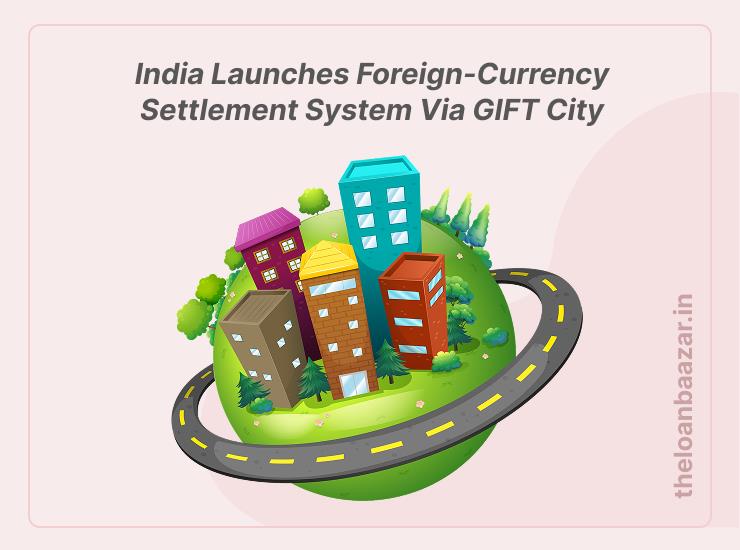India’s Financial System Takes a Giant Leap Forward!
he Government of India has officially launched a foreign currency settlement system through GIFT City’s IFSC. India’s financial landscape is evolving rapidly. This bold step aims to redefine cross-border transactions, making them faster, smoother, and far less dependent on international intermediaries.
As a result, India is positioning itself firmly on the global financial innovation map, strengthening its ambition to become a world-class financial hub.
Why This Move Truly Matters
Until now, most international payments from India relied heavily on correspondent banking networks and Nostro accounts. Because these systems involve several intermediaries, settlements often took 36 to 48 hours or more. Consequently, businesses faced additional costs, liquidity hurdles, and slower operations.
However, with GIFT City’s new mechanism, transactions can now be settled in real-time or within minutes. Therefore, exporters, importers, and fintech startups can finally experience the speed, transparency, and reliability that global markets demand.
What Exactly Has Been Launched?
The newly launched system enables foreign currency transactions—starting with USD—to be settled locally within GIFT IFSC.
Moreover, Standard Chartered Bank (India) has been designated as the first settlement bank for U.S. dollar transactions. The mechanism operates under the Payment and Settlement Systems Act and is jointly regulated by the Reserve Bank of India (RBI) and the International Financial Services Centres Authority (IFSCA).
As a result, India now joins the ranks of global financial centres such as Singapore, Hong Kong, and Tokyo, which already operate local foreign-currency clearing hubs.
Key Benefits and Strategic Impact
1. Faster Payments and Higher Efficiency
Businesses will now witness rapid fund movement, directly improving working capital management and overall operational efficiency.
2. Reduced Dependence on Foreign Correspondents
Since settlements occur locally, India significantly cuts its reliance on intermediary banks, reducing both time and transaction costs.
3. Boost to GIFT City’s Global Standing
Furthermore, this move enhances GIFT City’s global image, drawing interest from banks, fintech firms, and institutional investors worldwide.
4. Improved Transparency and Oversight
Localized settlements also enable better regulatory supervision by Indian authorities, ensuring strict compliance with AML, KYC, and FEMA guidelines.
5. Strong Advantage for Fintech and Export Sectors
With this system in place, fintech startups and exporters gain faster cross-border settlements, lower transaction costs, and greater predictability in payments.
Challenges and Considerations
Despite its promising outlook, the system’s rollout faces some short-term challenges. For instance, banks must maintain adequate forex liquidity to support real-time settlements. Moreover, exchange rate volatility could pose risks, making hedging instruments crucial.
Additionally, the success of this initiative depends on active participation from banks, fintech firms, and corporate entities. Therefore, maintaining regulatory alignment among the RBI, IFSCA, and FEMA frameworks will be essential for long-term stability.
How GIFT City’s IFSC Fits In
GIFT City (Gujarat International Finance Tec-City) serves as India’s first operational International Financial Services Centre. Designed as a special economic zone, it houses banking, capital markets, insurance, and fintech operations.
With world-class infrastructure, regulatory flexibility, and tax incentives, GIFT City is often called “India’s Singapore”. The introduction of the foreign-currency settlement system further strengthens its global appeal, making it a preferred hub for international financial operations.
Frequently Asked Questions (FAQs)
Q1. What is the main goal of this foreign-currency settlement system via GIFT City?
It enables real-time local settlement of foreign currency transactions in India, reducing dependence on foreign intermediaries and speeding up payments.
Q2. Which currency does the system currently support?
It currently supports U.S. Dollar (USD) settlements, with plans to expand to other major currencies soon.
Q3. Who can access the system?
Entities registered under GIFT IFSC, including banks, fintech companies, and corporates engaged in global trade or finance.
Q4. How does it differ from traditional correspondent banking?
Traditional systems involve multiple intermediaries and longer processing times. In contrast, GIFT City’s model offers direct, faster, and cheaper local settlement in foreign currencies.
Q5. Who regulates this new settlement mechanism?
The system operates under joint regulation by the RBI and IFSCA.
Q6. How will this benefit Indian exporters and importers?
They’ll gain from faster settlements, improved liquidity, reduced forex risks, and lower operational costs.
Q7. What’s next for GIFT City?
Expect multi-currency expansion, more participation from global banks, and policy initiatives aimed at transforming it into one of the world’s leading financial centres.
Conclusion: A Defining Moment for India’s Financial Future
In summary, the launch of the foreign-currency settlement system via GIFT City marks a turning point in India’s financial journey. This development doesn’t just modernize payment systems—it symbolizes India’s determination to lead the next wave of global financial infrastructure.
As the system matures, India will not only facilitate cross-border efficiency but also strengthen its status as a trusted and innovative financial powerhouse.
I











